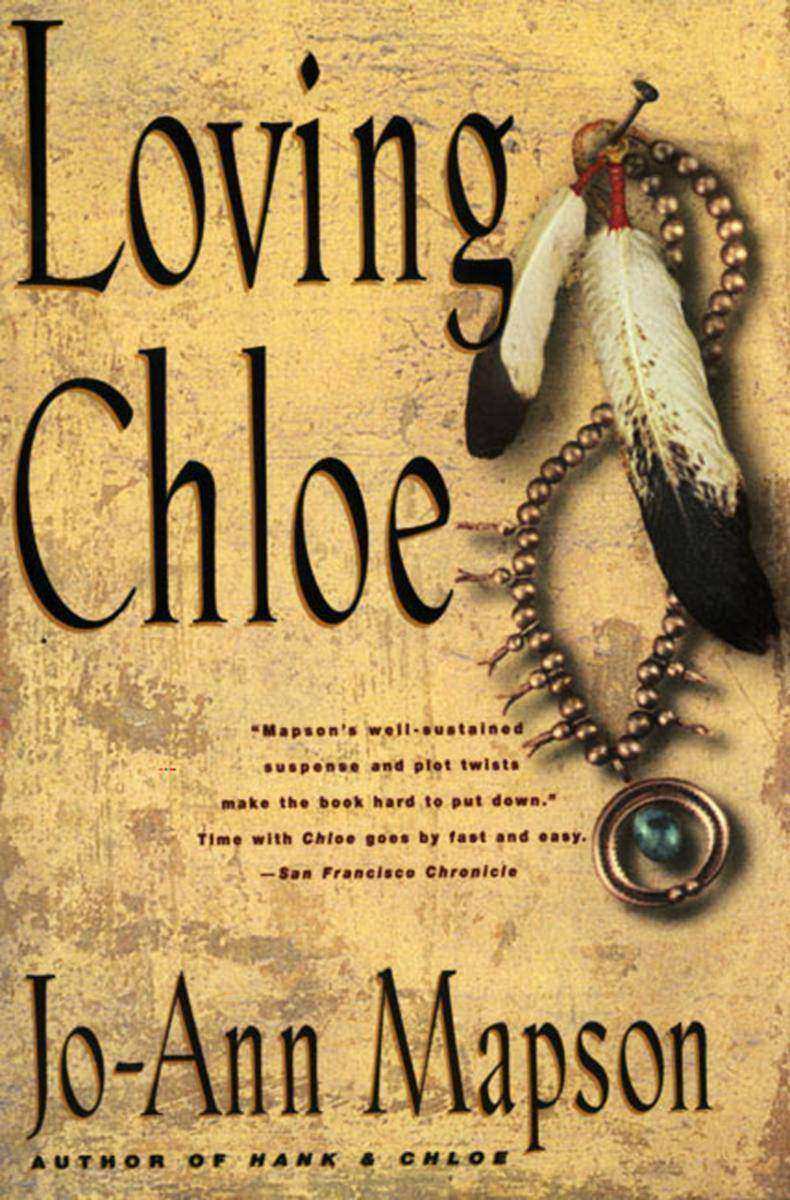
HarperCollins e-books
¥77.49
When 34-year-old Chloe Morgan appears on Hank Oliver's doorstep in Cameron, Arizona, she arrives with more than her old white German shepherd, Hannah, and a rambunctious horse in tow. Chloe is pregnant with Hank's child, and she's as tough-talking and vulnerable, skittish and tender as when last we saw her, in Jo-Ann Mapson's acclaimed first novel Hank & Chloe. Loving Chloe takes up where the earlier novel leaves off. As Chloe and Hank settle somewhat uneasily into domesticity in his grandmother's cabin, a local Navajo legend named Junior Whitebear, an artist whose work has been praised by the eastern commercial establishment, returns home to collect his father's ashes and renew his own spirit after years spent in the art world fast lane. When Junior arrives at the reservation, he doesn't expect to find a son he fathered unwittingly nine years ago with Corinne Johnson; nor is he looking to fall in love with newcomer Chloe Morgan and to deliver her baby girl. Both events change his life forever, not to mention the lives of those around him. A passionate love story, Loving Chloe explores the emotional complexity of a love triangle with sympathy, humor and compassion. Sexual longing, the bonds of family and nagging questions of identity with far-reaching consequences making Loving Chloe a rich, rewarding work of fiction. Set against the spectacular beauty of the American Southwest, Jo-Ann Mapson's new novel is the page-turning sequel to Hank & Chloe that readers have eagerly been awaiting.

Lunch Lessons
¥83.93
Remember how simple school lunches used to beYou'd have something from every major food group, run around the playground for a while, and you looked and felt fine. But today it's not so simple. Schools are actually feeding the American crisis of childhood obesity and malnutrition. Most cafeterias serve a veritable buffet of processed, fried, and sugary foods, and although many schools have attempted to improve, they are still not measuring up: 78 percent of the school lunch programs in America do not meet the USDA's nutritional guidelines. Chef Ann Cooper has emerged as one of the nation's most influential and most respected advocates for changing how our kids eat. In fact, she is something of a renegade lunch lady, minus the hairnet and scooper of mashed potatoes. Ann has worked to transform cafeterias into culinary classrooms. In Lunch Lessons, she and Lisa Holmes spell out how parents and school employees can help instill healthy habits in children. They explain the basics of good childhood nutrition and suggest dozens of tasty, home-tested recipes for breakfast, lunch, and snacks. The pages are also packed with recommendations on how to eliminate potential hazards from the home, bring gardening and composting into daily life, and how to support businesses that provide local, organic food. Yet learning about nutrition and changing the way you run your home will not cure the plague of obesity and poor health for this generation of children. Only parental activism can spark widespread change. With inspirational examples and analysis, Lunch Lessons is more than just a recipe book—it gives readers the tools to transform the way children everywhere interact with food.

Maggie Sweet
¥78.55
"Last night at supper my husband announced that he had taken our entire life savings and spent it on a family cemetery plot." Maggie Sweet has had enough. For nearly nineteen years, she's kept house, lived with her husband Steven's frugal weekly menus and dour taste in home decorating, and humored his humorless mother. Now, at thirty-eight, she's nearly finished raising her twin daughters and wants to begin her long-deferred career as a hairstylist. But Steven won't hear of it. It seems as if everyone else has learned how to live. while Maggie has only learned where she's going to end up after she dies. To make matters worse, Maggie's twenty-year high school reunion is Just around the corner and her long-lost high school boyfriend is back in town. It's not easy for Maggie to sort out her feelings, however, when she has to contend with rampant small-town gossip, surly daughters, and a grandmother who's made it her life's work to keep an eve on Maggie. If only she could see into the future, there is the hope of a second chance at life. In this tender and funny story about friendship, self-worth, family, and unbreakable ties, Maggie Sweet discovers that she has the strength to be her own woman.
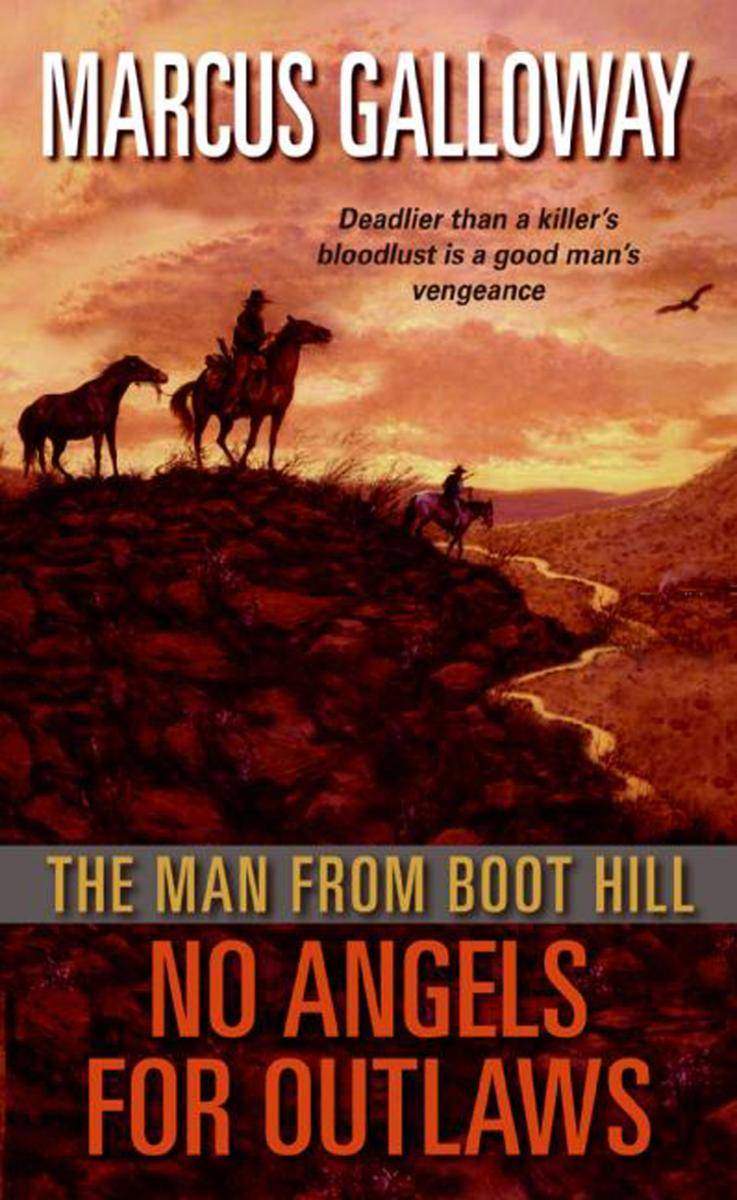
The Man From Boot Hill: No Angels for Outlaws
¥42.03
An undertaker with a past he'd rather forget, Nick Graves has finally found some measure of peace and happiness in the small town of Ocean on the edge of the desert. Others, however, are nowhere near as lucky—particularly rancher Joseph Van Meter, a good man whose whole family is mercilessly slaughtered by marauding outlaws. Now, more than anything, Van Meter wants blood vengeance . . . and he wants Nick Graves to be his killer angel. Nick's seen a lot of death—and has dispensed a fair share himself—and he recognizes the pain that's eating Joseph alive. But just as important as seeing justice done, Nick wants to save the broken soul who rides beside him. Because when a man's got nothing to lose, he tends to get crazy—and the innocent as well as the deserving often wind up dead.
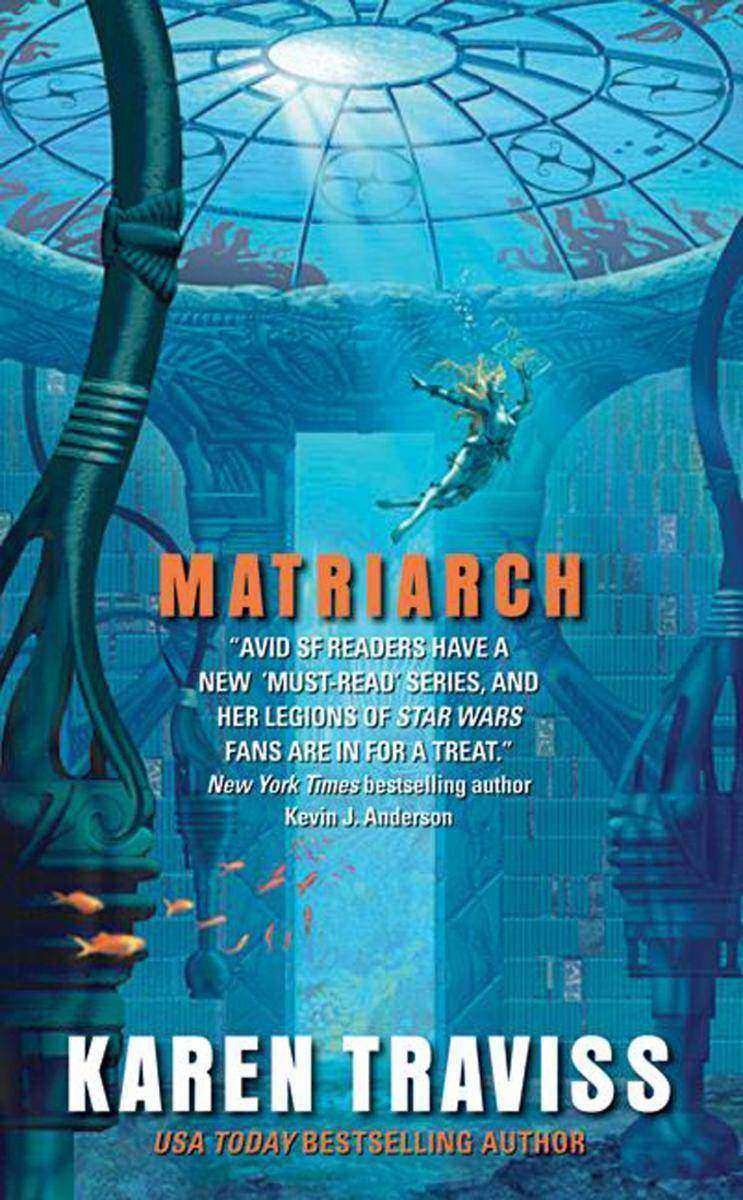
Matriarch
¥55.31
In thirty years, the invincible Eqbas will arrive at Earth to forcibly return the planet to what it once was—as retribution, in part, for the gethes' thoughtless near-extermination of an alien ocean-dwelling species. First, however, another world requires their attention: the crowded, ecologically ravaged planet of the swarming, insect-like isenj. Efforts to drastically reduce the isenj population have sparked a devastating civil war—which may well do the savior/destroyers' work for them. And the human visitors can only watch. Rendered immortal and ever changeable by a parasite in her blood, ex-cop Shan Frankland isn't content merely to play Matriarch to her two similarly infected mates—one earthborn, one alien wess'har. Her fears for the future of Umeh and the ultimate fate of humankind must be set aside while she tackles an unfulfilled duty that haunts her every waking moment—a mission that must be undertaken for the sake of the future—and pursues a righteous vengeance.

The Mediterranean Diet
¥55.31
Scientists have discovered that traditional Mediterranean cuisine is one of the most healthful, nutritious diets in the world one that can help everyone lose weight and enjoy lower rates of coronary heart disease and other chronic conditions, including diabetes and cancer. From tasty Moroccan vegetable stew to rosemary focaccia, from eggplant parmesan to lemon almond cake, The Mediterranean Diet offers a program that will make dieters everywhere and food lovers in general rejoice. Includes a 7-day eating plan chock full of savory meals Essential in-depth nutritional information about each food category A 3-day exercise plan Luscious soup-to-nuts recipes designed to satisfy your individual tastes Lose weight and worry with every delicious meal!

Middle Age: A Romance
¥94.10
In Salthill-on-Hudson, a half-hour train ride from Manhattan, everyone is rich, beautiful, and -- though they look much younger -- middle-aged. But when Adam Berendt, a charismatic, mysterious sculptor, dies suddenly in a brash act of heroism, shock waves rock the town. But who was Adam BerendtWas he in fact a hero, or someone more flawed and human?
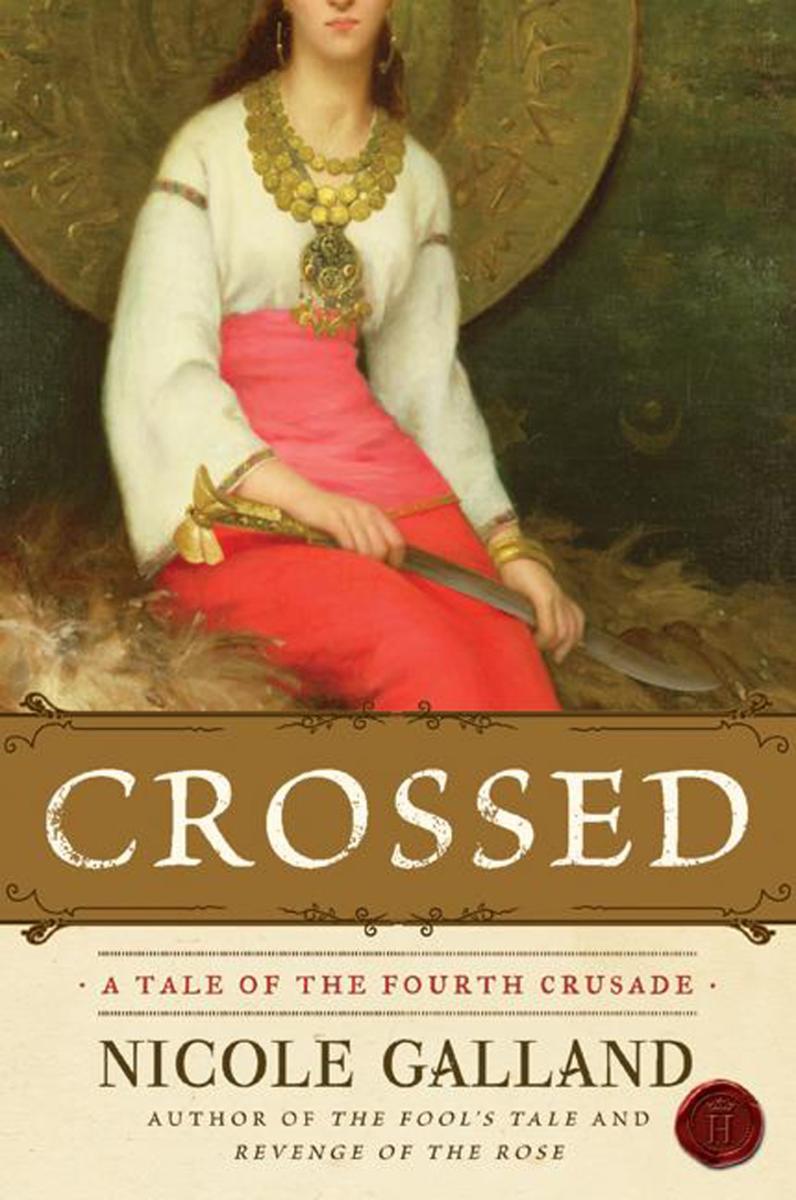
Crossed
¥88.33
In the year 1202, tens of thousands of crusaders gather in Venice, preparing to embark for Jerusalem to free the Holy City from Muslim rule. Among them is a lowly vagabond Briton, rescued from damnation by a pious knight who burns with zealous fire for their sacred undertaking. And so they set sail, along with dedicated companions—and with a beautiful, mysterious Arab "princess" whom the vagabond liberates from a brutish merchant. But the divine light guiding their "righteous" campaign soon darkens as the mission sinks ever deeper into catastrophe, disgrace, and moral turpitude—as Christians murder Christians in the Adriatic port city of Zara, tragic events are set in motion that will ultimately lead to the shocking and shameful fall of Constantinople. Impeccably researched and beautifully told, Nicole Galland's Crossed is a stunning tale of the disastrous Fourth Crusade—and of the hopeful, brave, and driven who were caught up in and irrevocably changed by a corrupted cause and a furious battle beyond their comprehension or control.
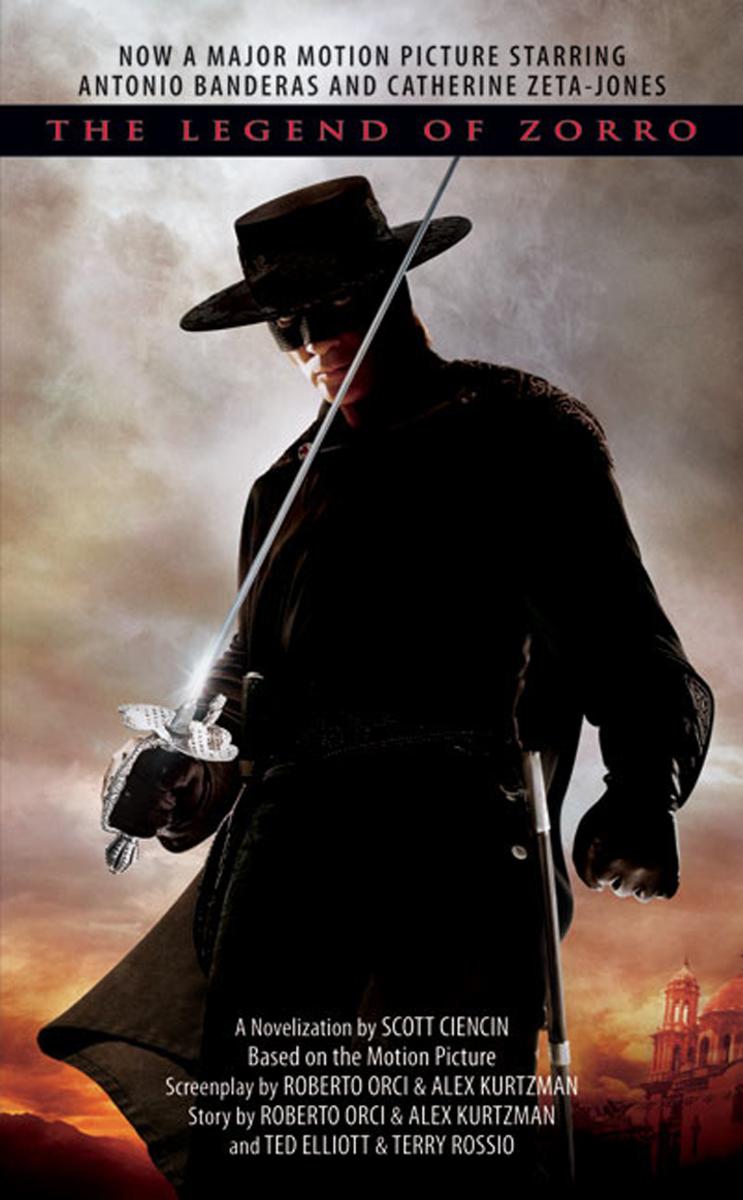
The Legend of Zorro
¥49.05
The long–awaited sequel to The Mask of Zorro––the blockbuster film that grossed more than $230 million worldwide––is coming in September 2005. . .and we've got the adult novelisation! In the early 19th century Don Diego de la Vega championed the people of Mexico against the tyranny of Spanish rule as the masked swordsman and hero Zorro. Twenty years later an orphan named Alejandro, whom Don Diego trained as a boy, becomes Don Diego's successor, serving up a similar brand of freedom and justice in California, reuniting Don Diego with his long lost daughter Elena and marrying the beautiful young woman . At last, in this riveting novelisation of the latest Zorro film from Sony Pictures and Zorro Productions Inc., the mantel is about to be passed again! Alejandro and Elena's marriage is suffering from the strain of Alejandro's work. They're on the very brink of divorce when Elena finds herself central to a Pinkerton sting operation that threatens to expose Zorro's true identity and risk Alejandro's life as well as place Elena's former beau, a French Count and suspected arms dealer, behind bars. It isn't long before seeking justice becomes a family affair, involving Elena, Alejandro and their beloved son Joaquin. Could this adventure possibly lead to a reconciliation between the two lovers and to the succession, yet again , of the swordThis adaptation of the forthcoming film The Legend of Zorro completes the circle of history established by Isabel Allende's new book exploring the birth, life and times of bon vivant Don Diego, the first generation Zorro, and by the 1998 blockbuster film Mask of Zorro which recounted the assumption of the mask by the equally dashing and principled second generation Zorro, Alejandro with the introduction of a possible third generation Zorro.

Lie Still
¥52.63
A prominent physician debuts as a gifted storyteller in Lie Still, a dazzlingly suspenseful and compulsively readable trip through the dark underbelly of the OR -- where reputations, careers, and lives are on the line. In a sleepy, small-town Arizona hospital, a thirteen-year-old boy lies in a coma after inexplicably suffering a cardiac arrest. His doctors are perplexed. Although emotionally disturbed Henry Rojelio was a frequent visitor to the emergency room -- often for bouts of asthma, but usually just for attention -- no one ever anticipated a battle with death. Surgical resident Malcolm Ishmail began his medical career months before at a busy Phoenix hospital -- a far cry from the small ER deep in the silent heart of the desert, where Henry Rojelio lies. There, Malcolm fell into a secret, exhausting affair with one of his professors, Dr. Mimi Lyle, a beautiful, charismatic brain surgeon who had subtle difficulties in the operating room. In a moment of weakness "Dreamy Mimi" confessed to him her failings as a neurosurgeon; Malcolm reported her to his superiors . . . and promptly lost his job. Now, miles away from Phoenix, Dr. Ishmail struggles to save his young asthmatic patient's life and his future as a surgeon. And with little time and few clues to the cause of Henry Rojelio's sudden collapse, the impressionable doctor wonders whether his former lover may have exacted a disturbing revenge.Rich in medical detail and written with stylish, razor-sharp action and dialogue, Lie Still is a gripping, emotional drama of human failings and devastating consequences that marks the debut of a remarkable new voice.

Lost
¥94.10
Winifred Rudge, a bemused writer struggling to get beyond the runaway success of her mass-market astrology book, travels to London to jump-start her new novel about a woman who is being haunted by the ghost of Jack the Ripper. Upon her arrival, she finds that her stepcousin and old friend John Comestor has disappeared, and a ghostly presence seems to have taken over his home. Is the spirit Winnie's great-great-grandfather, who, family legend claims, was Charles Dickens's childhood inspiration for Ebenezer ScroogeCould it be the ghostly remains of Jack the RipperOr a phantasm derived from a more arcane and insidious originWinnie begins to investigate and finds herself the unwilling audience for a drama of specters and shades some from her family's peculiar history and some from her own unvanquished past.In the spirit of A. S. Byatt's Possession,with dark echoing overtones of A Christmas Carol,Lost presents a rich fictional world that will enrapture its readers.

Lost in the City
¥77.49
The nation's capital that serves as the setting for the stories in Edward P. Jones's prizewinning collection, Lost in the City lies far from the city of historic monuments and national politicians. Jones takes the reader beyond that world into the lives of African American men and women who work against the constant threat of loss to maintain a sense of hope. From "The Girl Who Raised Pigeons" to the well-to-do career woman awakened in the night by a phone call that will take her on a journey back to the past, the characters in these stories forge bonds of community as they struggle against the limits of their city to stave off the loss of family, friends, memories, and, ultimately, themselves.Critically acclaimed upon publication, Lost in the City introduced Jones as an undeniable talent, a writer whose unaffected style is not only evocative and forceful but also filled with insight and poignancy.

Oz Garcia's The Healthy High-Tech Body
¥145.97
Do you want to live until you're ninety but always feel like you're twentyDo you want to find out about the most recent breakthroughs in nutrition, weight loss, disease prevention, cognitive enhancement, and anti-agingDo you want the very best body you've ever had -- one that will last you a lifetime?Oz Garcia's The Healthy High-Tech Body is the first comprehensive guide to the finest health supplements, procedures, products, techniques, and technology in the world today. Whether you're looking for remedies to boost your energy level, reliable sources for nutraceuticals, information on the latest European cell treatments, secrets to youthful aging, or the latest in cosmeceuticals for skin, nails, and teeth, it's all here. Renowned nutritional consultant Oz Garcia shares an unmatched array of health information and resources, along with information from some of the most famous and sought-after doctors, scientists, and health authorities in the world, including Dr. Barry Sears, Dr. Nicholas Perricone, Clinique La Prairie of Switzerland, Dr. Peter Proctor, Ann Louise Gittleman, and Dr. Pamela Peeke. Together they present the essential building blocks of health and fitness for our time. Only Oz Garcia's The Healthy High-Tech Body offers: ?A global resource guide of health products, services, and technology ?Secrets to youthful aging, from European cell shots to the use of human growth hormones ?The Paleotech Diet, a revolutionary nutritional program, including dozens of deliciously healthy recipes ?The seven steps to successful fat burning and permanent weight loss ?The secrets of maintaining sexual pleasure and potency throughout your life ?Updated information on injectables, stem cell implants, cosmeceuticals, and body scans ?Interviews with the top experts and pioneers in the fields of nutrition, fitness, life extension, cosmetic surgery, integrative medicine, and bioengineering ?CD-ROM including an interactive version of Life Extension's 945-page reference book Disease Prevention and Treatment, archives of articles from Life Extension magazine, and useful Web links You can start today, at any age, to develop a Healthy High-Tech Body by taking advantage of the newest inventions, innovations, approaches, and techniques to enhance your living experience. Armed with the information in this book, you will be able not only to prolong your life, but also to maintain and extend your youthfulness in ways you never thought possible.

The People Look Like Flowers At Last
¥95.39
the gas line is leaking, the bird is gone from the cage, the skyline is dotted with vultures; Benny finally got off the stuff and Betty now has a job as a waitress; and the chimney sweep was quite delicate as he giggled up through the soot. I walked miles through the city and recognized nothing as a giant claw ate at my stomach while the inside of my head felt airy as if I was about to go mad. it’s not so much that nothing means anything but more that it keeps meaning nothing, there’s no release, just gurus and self- appointed gods and hucksters. the more people say, the less there is to say. even the best books are dry sawdust. —from "fingernails; nostrils; shoelaces"
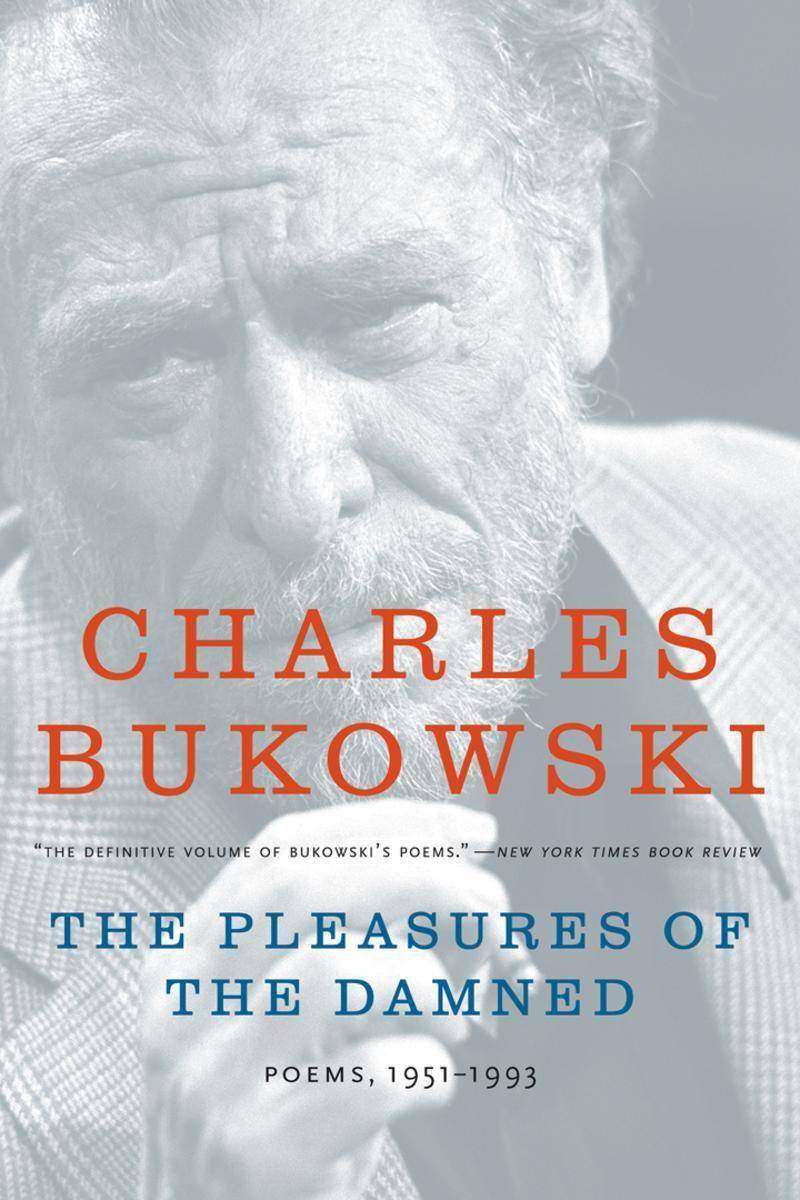
The Pleasures of the Damned
¥94.10
To his legions of fans, Charles Bukowski was and remains the quintessential counterculture icon. A hard-drinking wild man of literature and a stubborn outsider to the poetry world, he wrote unflinchingly about booze, work, and women, in raw, street-tough poems whose truth has struck a chord with generations of readers.Edited by John Martin, the legendary publisher of Black Sparrow Press and a close friend of Bukowski's, The Pleasures of the Damned is a selection of the best works from Bukowski's long poetic career, including the last of his never-before-collected poems. Celebrating the full range of the poet's extraordinary and surprising sensibility, and his uncompromising linguistic brilliance, these poems cover a rich lifetime of experiences and speak to Bukowski's immense intelligence, the caring heart that saw through the sham of our pretenses and had pity on our human condition (New York Quarterly ). The Pleasures of the Damned is an astonishing poetic treasure trove, essential reading for both longtime fans and those just discovering this unique and legendary American voice.
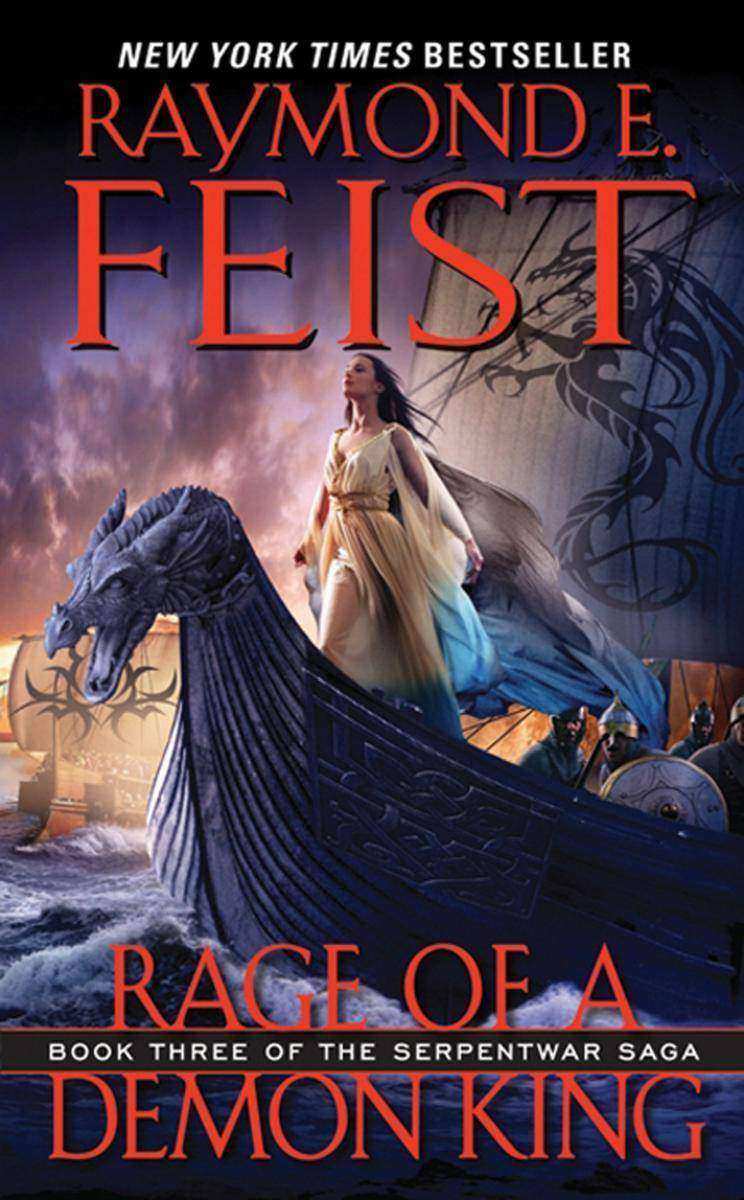
Rage of a Demon King
¥55.91
A loyal soldier and a wealthy merchant have served bravely in the flames of an enduring war that is ravaging their land. But swords, bows, wits and courage will no longer be enough to defeat the scourge that is descending upon their home. For a foul and terrible thing has escaped from a world already devoured to feed on one consumed by chaos an insatiable nightmare creature of dark and murderous nature which seeks to own and corrupt the very source of life itself The final conflict is joined, pitting serpent against man and magician against demon. For those who battle in the cause of good, there will be victory . . . or there will be doom for all.There can be no other outcome.

Night of the Jaguar
¥77.49
Science and mysticism, nature and greed collide in this mind-bending, compulsively readable thriller from the author of Tropic of Night and Valley of Bones, hailed by the Washington Post as "miracles of intelligent fiction . . . among the essential novels of recent years."Deep in the jungles of Colombia, an American priest is shot dead in his makeshift church.A few weeks later an Indian shaman called Moie arrives in south Florida, armed only with a bag of totems and the fearsome power of Jaguar, his god.In Miami, retired detective Jimmy Paz, his wife, and his seven-year-old daughter are plagued by dreams of giant jungle cats that haunt both their sleeping and waking hours.When affluent Miami businessmen begin to die in gruesome fashion, the local police are baffled by the lack of clues -- other than the massive, catlike footprints that appear at the scene of each murder. They turn to Paz, famous throughout the city for cracking open two previous, impossible-to-solve cases, and for reasons he doesn't dare share, he agrees to come out of his self-imposed retirement to track the killer.As Paz investigates, Moie finds refuge with a group of ecologically minded activists who treat the strange little man as a pet until they find out exactly what mission brought him to the United States and that it's somehow connected to the grisly murders that are occurring with frightening regularity. The deeper Paz digs into the case, the closer to home the danger gets: his investigation opens the door to his mysterious and shocking past and he slowly begins to realize that the dreams he and his family are having could mean the death of his beloved daughter. To save her life -- and his own -- he must reach into the deepest corners of his soul and find the strength to hold fast against the irresistible pull of the spirit world.Only Michael Gruber is capable of combining heart-stopping action with a ferociously intelligent examination of what makes us human, in novels that have been praised as "bold . . . provocative, and frightening" (USA Today) and "dazzling, literate and downright scary" (Cleveland Plain Dealer). Night of the Jaguar is an unforgettable blend of imagination, suspense, and thought-provoking inquiry into the nature of good and evil.

Nora, Nora
¥71.94
At twelve, Peyton McKenzie isn't ready to share her widowed father with anyone, let alone Nora, her redheaded, cigarette-smoking cousin who just rolled into town behind the wheel of a pink Thunderbird. But her father seems to like Nora, and she does make for good conversation with her friends at the Losers Club, and prim Aunt Augusta hates her, which means she can't be all bad. In fact, maybe Nora is just what quiet Lytton, Georgia, needs this summer.And when Nora takes a job teaching the first integrated honors class at the local high school, it looks like she might stay forever. But it becomes clear that something is troubling her. Peyton knows it's more than the local gossips who don't like Nora's "unsouthern" ways. When the shocking truth comes to light, it will stun this small segregated town and, more importantly, teach Peyton a lesson she will never forget about love and its enormous cost.

The Nymphos of Rocky Flats
¥94.10
The first and only vampire book to be declassified by the federal government . . .Felix Gomez went to Iraq a soldier. He came back a vampire. Now he finds himself pulled into a web of intrigue when an old friend prompts him to investigate an outbreak of nymphomania at the secret government facilities in Rocky Flats. He'll find out the cause of all these horny women or die trying! But first he must contend with shadowy government agents, Eastern European vampire hunters, and women who just want his body . . .Skewering sexual myths, conspiracy fables, and government bureaucracy, The Nymphos of Rocky Flats reveals the bizarre world of the undead with a humorous slant and a fresh twist.

Seduction's Spell
¥78.55
On the banks of a sleepy turn of the Rose River in North Texas sits a charming antebellum mansion—an intimate resort owned by ravishing hostess Isabella "Belle" Partricelli. This inn exists for one purpose alone: to bring couples together by fulfilling their every secret longing and satisfying their most sensuous needs...Guests come to Belle On The Bend sharing one thing in common: they all desperately long to experience a passion that is missing from their lives. Maggie is here because her wealthy husband gives her everything she could possibly wish for—but not what she desires the most. Supermodel Yvonne is the object of every man's fantasy—yet no man can satisfy her. And pro-football star Vince is willing to do whatever it takes to win back his wife and set fire to a love that has long since gone cold.Under the bewitching Belle's sensual guidance, those who come to this remarkable place seeking fulfillment will find pleasure beyond their wildest dreams—for no woman or man who enters can resist the sweet allure of . . . Seduction's Spell!

Shadow of a Dark Queen
¥62.90
A dread darkness is descending upon a great land called Midkemia—a powerful and malevolent race of monsters that has slipped through a hole in the dimensions. And two unlikely young heroes—a bastard heir denied his birthright and an irrepressible scoundrel with a penchant for thievery—must take up arms in the struggle to protect their besieged world...two friends chosen by Destiny to stand at the fore of the battle that is to come against the gargantuan reptile army of the terrible Emerald Queen.




 购物车
购物车 个人中心
个人中心



